What is the Strategic Change Cycle?
The Strategic Change Cycle is an action in strategic planning aimed at the constant development of an organization’s strategy and adaptation to new conditions. All the steps in this cycle are necessary for the most effective and productive strategic planning. Blackburn (2019) assumes that “an organization typically has to go through more than one cycle of strategic planning before it can develop a truly effective vision for itself” (p. 35). However, even during these cycles, the strategy becomes more precise and efficient.
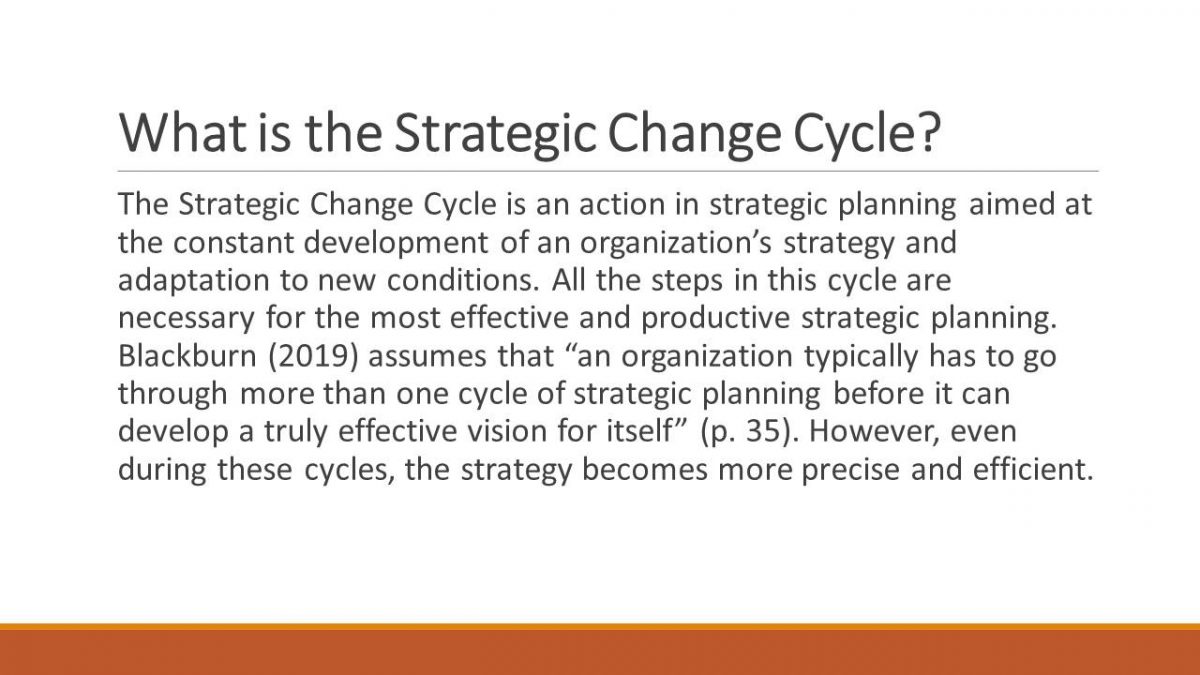
Key components of the Strategic Change Cycle
Discussion and organization of the planning process
At this stage, a group of managers and stakeholders who are involved in the planning process gathers. They discuss goals, objectives, timing, roles, reporting, and other details. In addition, they must take into account possible restrictions and threats.
Creation of mandates
Mandates contain the basic rules, expectations, and requirements developed for participants and the company as a whole. This allows them to limit the work scope and understand the areas of responsibility and influence of each person.
Development of mission, principles, and values
This stage allows people to understand the environment in which they work clearly. Thanks to this, they will have a shared vision of what is happening. This will enable them to work more harmoniously and better understand each other.
SWAT analysis
Participants in strategic planning should consider internal and external factors affecting the organization. This will allow them to identify strengths and weaknesses and work based on this knowledge.
Identification of strategic planning
At this stage, the team must understand what issues have the most significant negative impact on the organization. These may be finances, services, values, and other factors. They will need to focus on these issues as much as possible.
Creating solution strategies
After identifying problems, it is necessary to develop a plan to solve them. Thanks to the team’s coordinated work, people will be able to create many useful ideas to achieve their goals.
Revision of strategies
It is necessary to review strategies to ensure that everyone is accurately aware of the goals and how to achieve them. Thus, the whole team will have a shared vision, which will make the work more effective.
Setting the vision of the company
All team members should have an understanding of the final result of the work. Realizing it, they will be able to focus on it and, if necessary, change the course of activity.
Creating an action plan
At this stage, it is necessary to describe in detail the actions of each person. They must follow the schedule, have specific resources, ways of interaction, and other details.
Adjustment of strategies
This process is ongoing, and performers need to report what they have achieved regularly. This allows them to be confident in the implementation of parts of the strategic plan and, if necessary, adapt it.
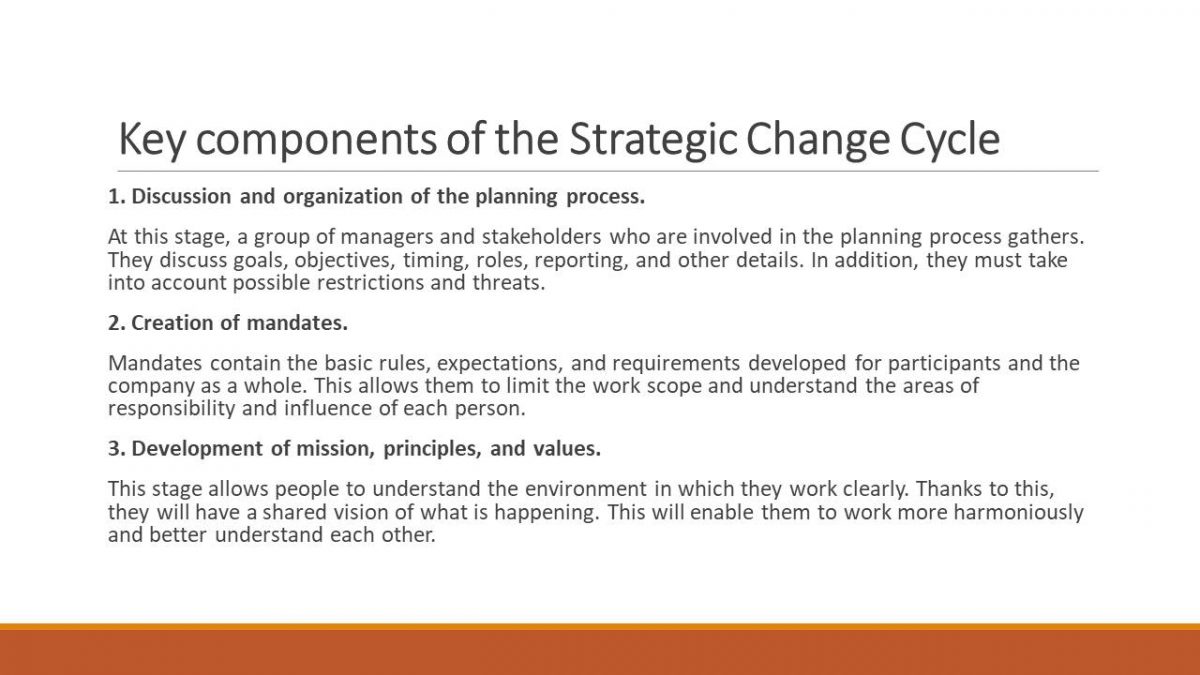
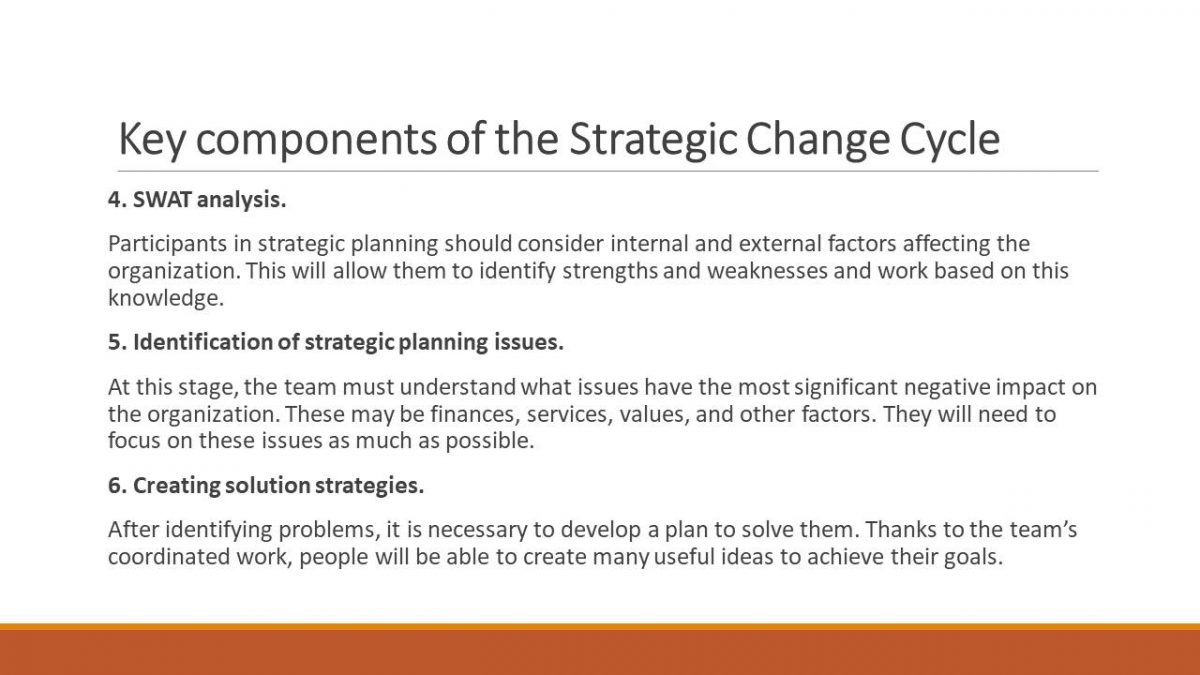
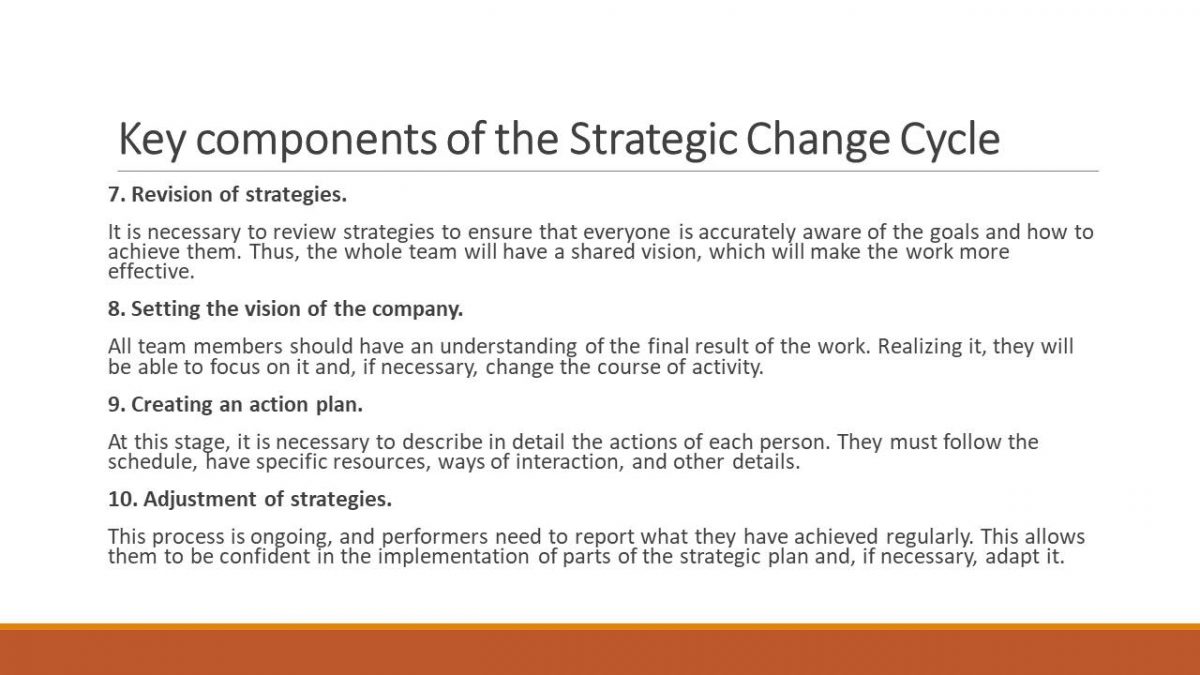
Objectives of the Strategic Change Cycle
- Coordination of state and municipal strategic management and budget policy measures.
- Determination of internal and external conditions, trends, restrictions, imbalances, imbalances, opportunities for socio-economic development.
- Prioritization of socio-economic policies.
- The formation and implementation of a set of measures ensuring the achievement of goals and solving socio-economic development problems.
- Determination of resources for achieving goals and solving problems.
- Coordination of actions of participants in strategic planning and activities provided for by strategic planning documents according to the timing of their implementation, expected results, and resource support parameters.
- Organization of monitoring and control over the implementation of strategic planning documents.
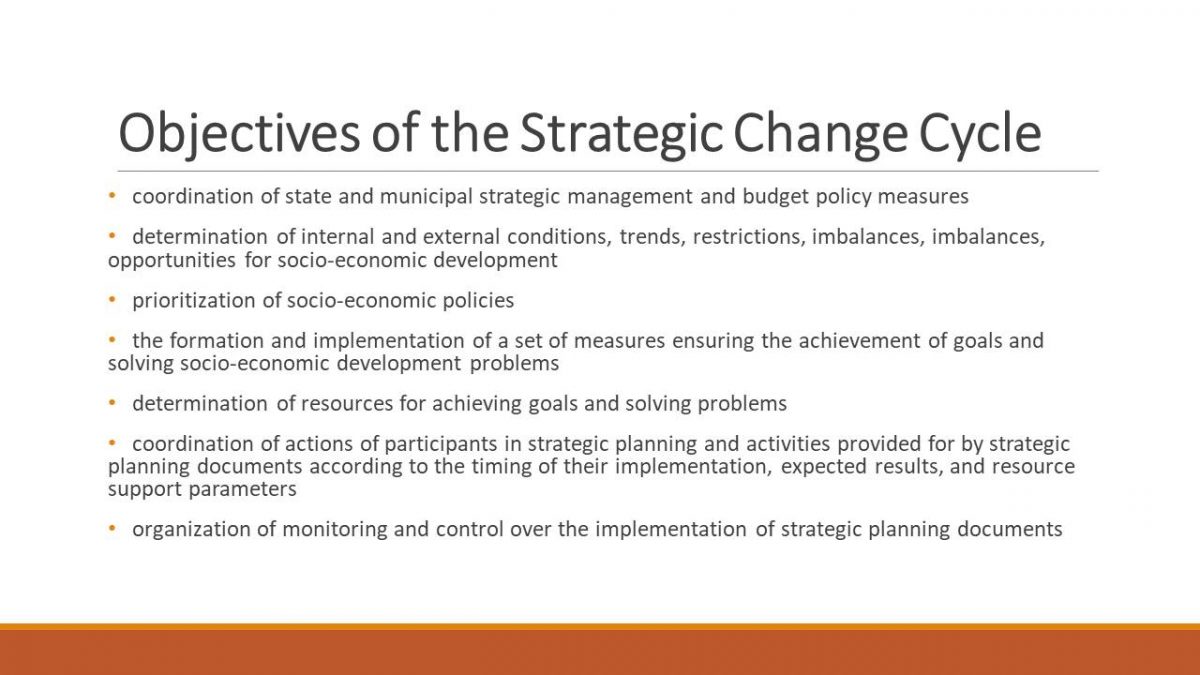
Strategic planning in public organizations
Strategic planning should be considered by all bodies of state power and administration as a universal tool. It provides a systematic and interconnected strategic goal-setting, formulation, and implementation of major public tasks (Bryson, 2018). It uses the mechanism of public-private partnerships and careful consideration of the whole variety of factors of internal and external nature. Strategic planning can provide increased efficiency and quality of public administration in the harsh conditions of globalization.
The strategic planning of socio-economic development and security at the state level is the choice of the most optimal management model. It can, while minimizing various strategic risks and threats, ensure the implementation of selected political and economic national priorities, and make the country’s development processes sustainable.
Legislative consolidation of the provisions governing the functioning and development of the state strategic planning system is necessary. It should include state forecasting, program, and territorial planning, documents of state strategic planning, and monitoring of their implementation. In addition, the powers and responsibilities of participants in state strategic planning should be established.
Some third sector organizations achieve a certain level of success without working much on formal planning. However, strategic planning alone does not always ensure the success of a company. Nevertheless, formal planning can create several essential and often significant favorable factors for the development of a third sector organization. According to Ansoff, Kipley, Lewis, Helm-Stevens, and Ansoff (2018), “one end product of strategic management is a potential for future fulfillment of the organization’s objectives” (p. 23). It allows companies to be more confident in their current and future activities.
At the present stage, the rate of economic changes is such that strategic planning is the only way to formally forecast future problems and opportunities for a third sector organization. It provides senior management with a means of creating a long-term plan. Strategic planning also provides the basis for decision making. Knowing what the organization wants to achieve helps to clarify an appropriate course of action and helps reduce risk when making decisions.
A business strategy developed in third sector organizations should be simple, agile, and action-oriented. Simple, since the activities of a third sector organization are limited. The lack of staff competent in the field of strategic planning does not allow the use of complex management decisions. Agile, since even minor changes in the socio-economic environment often force a third sector organization to change its functioning. Action-oriented, since third sector organizations should always have various means and ideas for overcoming any external and internal changes.
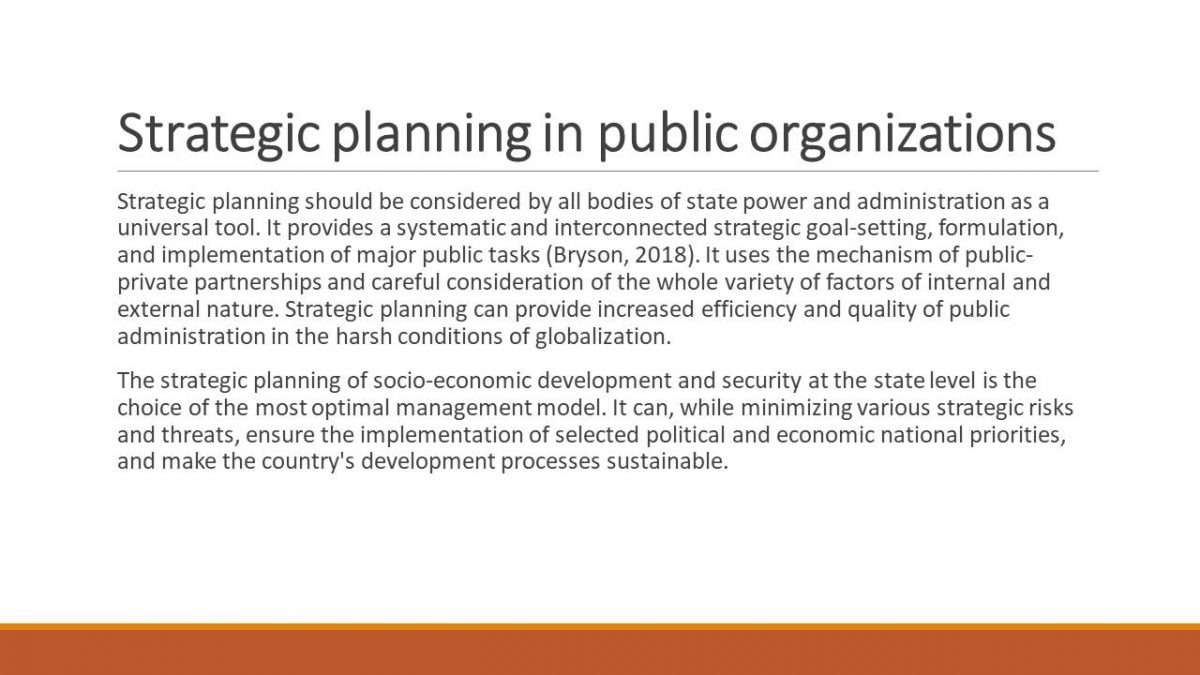
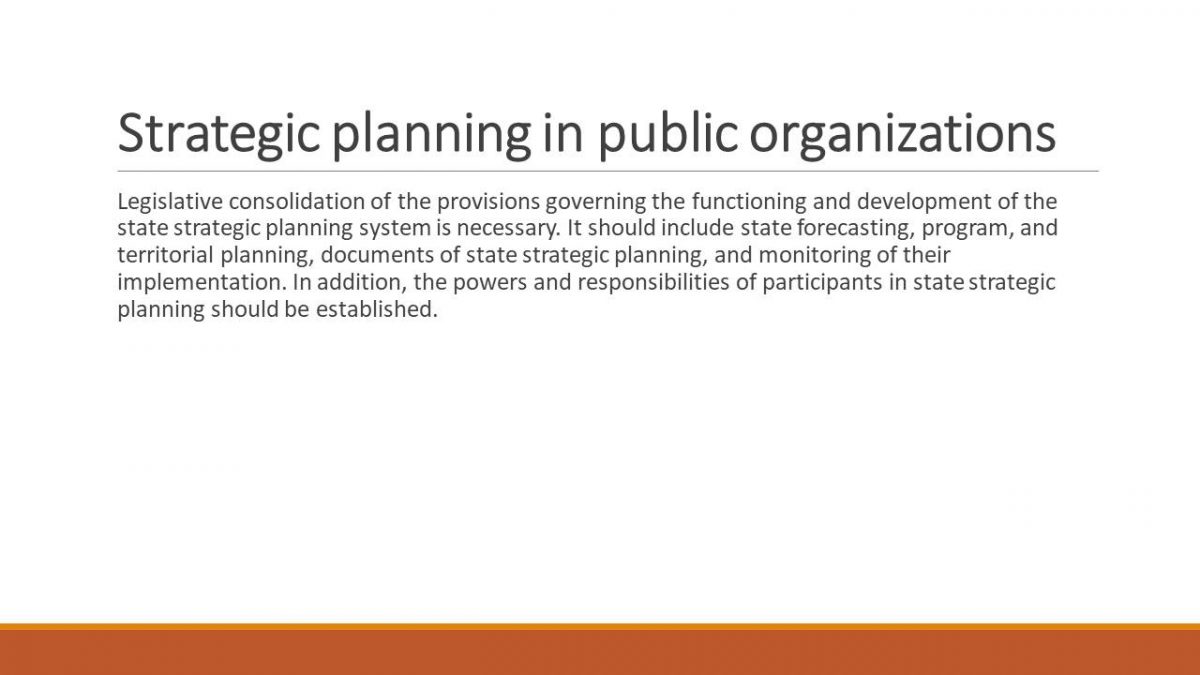
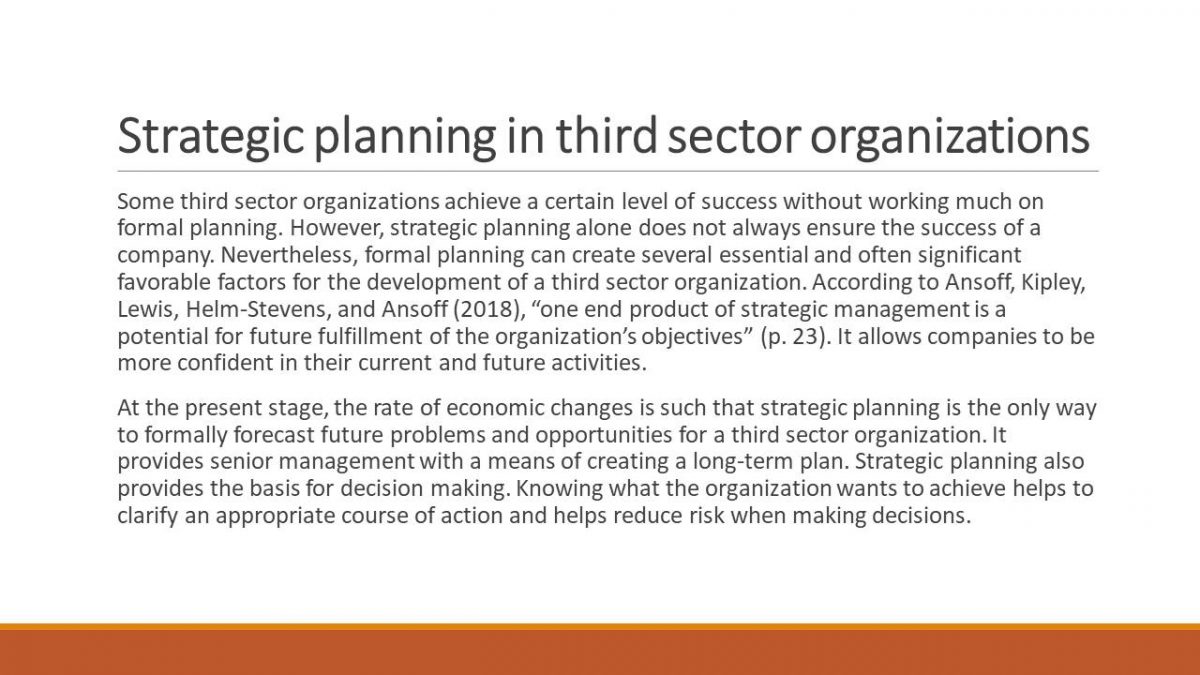
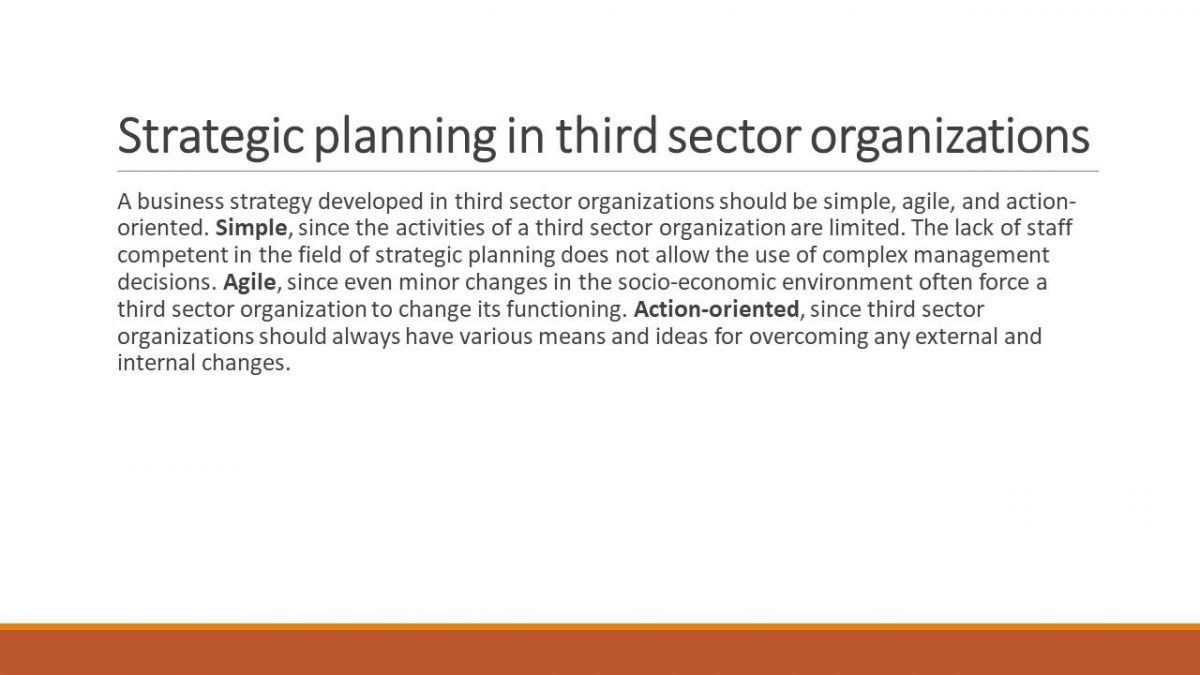
Reasons for incorporating the Strategic Change Cycle
First, the strategic change cycle is aimed at adapting to continuous changes. Its application allows timely taking appropriate measures depending on current events. This makes it easy to overcome difficulties and crises with the least losses.
Second, as part of the cycle, it is necessary to develop a mission, principles, and goals. Moreover, all stakeholders are involved in this process., and thanks to this, following the new strategy will be a truly productive process. Changes that rely on clear and correct values are aimed at bringing exclusively positive results.
Third, this cycle allows to anticipate possible problems in advance and come up with solutions at the planning stage. This can be especially important In a critical situation since resources and conditions will already be created to get out of it.
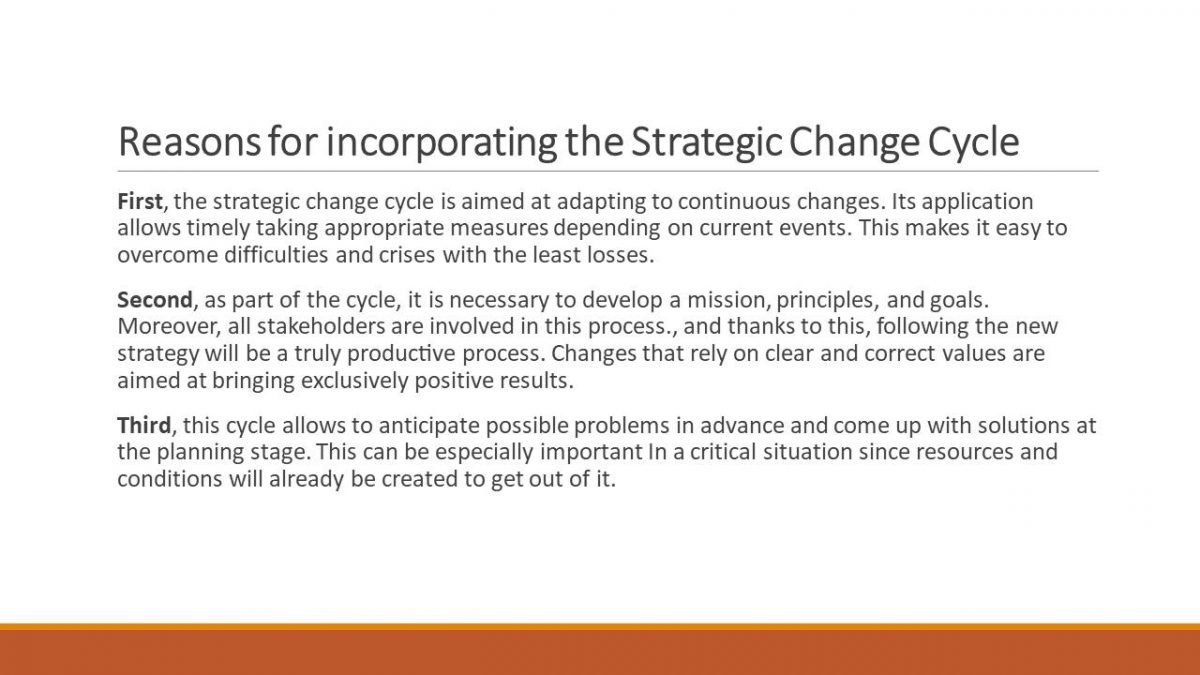
Strategic Change Cycle: summary
The strategic change cycle is a useful tool for working on strategic planning. It makes this work structured and efficient and allows to take into account all stakeholders, all the possibilities, and all potential shortcomings. Thanks to this, any organization can create an effective strategy and, if necessary, adapt it in time.
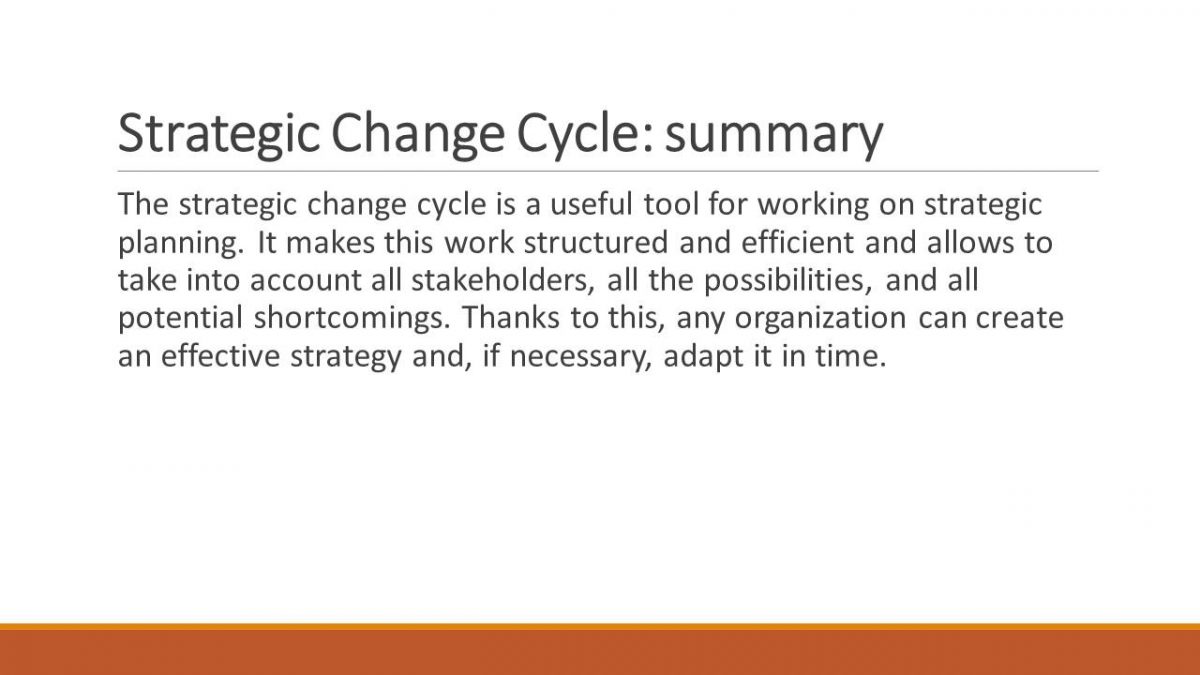
References
Ansoff, H. I., Kipley, D., Lewis, A. O., Helm-Stevens, R., & Ansoff, R. (2018). Implanting strategic management. Springer.
Blackburn, R. S. (2019). Leadership, Management, and Ethics: In the Face of Public Policy and Social Dialogue … An Analysis and Review of Critical Essays.
Bryson, J. M. (2018). Strategic planning for public and nonprofit organizations: A guide to strengthening and sustaining organizational achievement (5th ed.) Wiley.